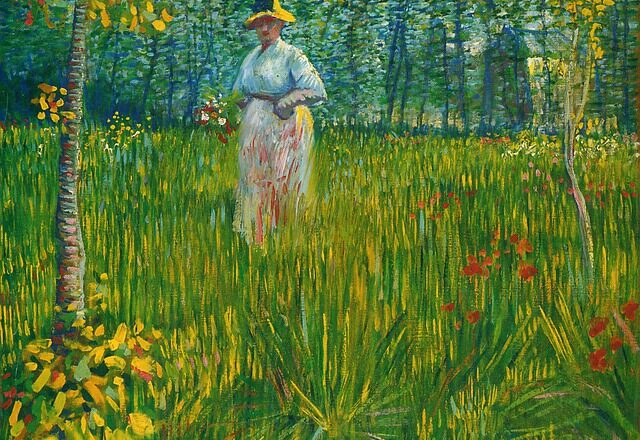Vincent van Gogh is one of the most famous and influential artists of all time. His art is exhibited and admired in museums and galleries worldwide.
Inhaltsverzeichnis
Who was Vincent van Gogh?
Vincent Willem van Gogh (* 30 March 1853 in Zundert, Netherlands; † 29 July 1890 in Auvers-sur-Oise, France) was a Dutch Post-Impressionist painter. He is one of the best-known representatives of this art movement and is considered one of the most famous artists ever. In his works he combined elements of Impressionism with expressive colour application and cubist forms. The subjects of his works are mostly landscapes or still lifes, but self-portraits and portraits of other people also occur.
His most important works
“The Sunflowers” (1888) The painting “The Sunflowers” is one of van Gogh’s most famous works. It shows a bunch of sunflowers standing in a vase. The painting is very colourful and the flowers seem very lively. “The Café Terrace in the Evening” (1888) One of van Gogh’s most famous works is “The Café Terrace in the Evening”. It shows a terrace with tables and chairs where people are sitting and drinking. The atmosphere is very relaxed and the colours are very vivid. “The Night Café” (1888) The painting “The Night Café” shows a café at night. It is very dark, but the lights of the lamps and the stars give the painting a beautiful atmosphere.
Where to find his works
Vincent van Gogh is probably one of the most famous artists of all time. His works can be found in many museums and galleries around the world. In Europe, there are several places where you can admire his works. One of the most famous is the Van Gogh Museum in Amsterdam, which houses over 200 paintings and 500 drawings by the artist. But you can also admire some of his masterpieces in Paris, London and Berlin.
Biography
Vincent van Gogh was born on 30 March 1853 in Groot-Zundert in the Netherlands. His father Theodorus van Gogh was a pastor of the Dutch Reformed Church. From 1869 to 1876 Vincent attended the secondary school in Zevenbergen and then the grammar school in Tilburg. After studying theology and philosophy in Amsterdam, he dropped out and moved to Brussels, where he took acting lessons. in 1880 van Gogh returned to Holland and worked as an art dealer in the Goupil & Cie gallery, but he soon realised that this work did not suit him and so he moved to Paris in 1886 to devote himself entirely to painting. In Paris, van Gogh met many other artists, among them Paul Gauguin, with whom he became close friends. Together with Gauguin, van Gogh spent some time in the southern French town of Arles, but the collaboration ended abruptly when van Gogh attacked Gauguin with a knife one day. Gauguin left Arles and van Gogh had to be committed to a mental institution. After his release from the asylum in 1889, van Gogh moved to Saint-Remy-de-Provence, where he lived and worked until his death in July 1890. Some of his most famous paintings were created during this time, including “The Stars” (1889) and “Sunflowers” (1888). On 27 July 1890, Vincent van Gogh shot himself in the Netherlands. He left behind an extensive body of work of around 900 paintings and drawings, as well as some 1,100 letters to friends and family.
The story with the ear
In the early hours of 27 December 1888, a man knocked on Van Gogh’s door in Arles. When the artist opened, he found himself face to face with a wild-looking man who said he was Paul Gauguin’s caretaker. The man told Van Gogh that Gauguin, in a fit of madness, had cut off another man’s ear and then left town. He gave Van Gogh the ear and asked him to burn it so that no one would know what had happened. Van Gogh was horrified by the story and burst into tears. He burned the ear, but he could not forget what had happened. Weeks later, he tried to take his own life by shooting himself in the stomach. Fortunately, he survived and was able to continue painting. His ear story, however, remained a great mystery. To this day, it is unclear exactly what happened on that December morning. Gauguin always denied having anything to do with the incident. Some people believe that Van Gogh cut off the ear himself and only made up the story to get Gauguin into trouble. Others believe that Van Gogh’s account is true and that Gauguin actually committed murder. We will probably never know for sure what really happened that day.
Conclusion
Vincent van Gogh is one of the most famous and popular artistic personalities of all time. He produced an enormous body of artistic work in a short period of time that has gained worldwide recognition. His influence on art history is undisputed. Due to his extraordinary life story, he has become a legend that does not fade away until today.
